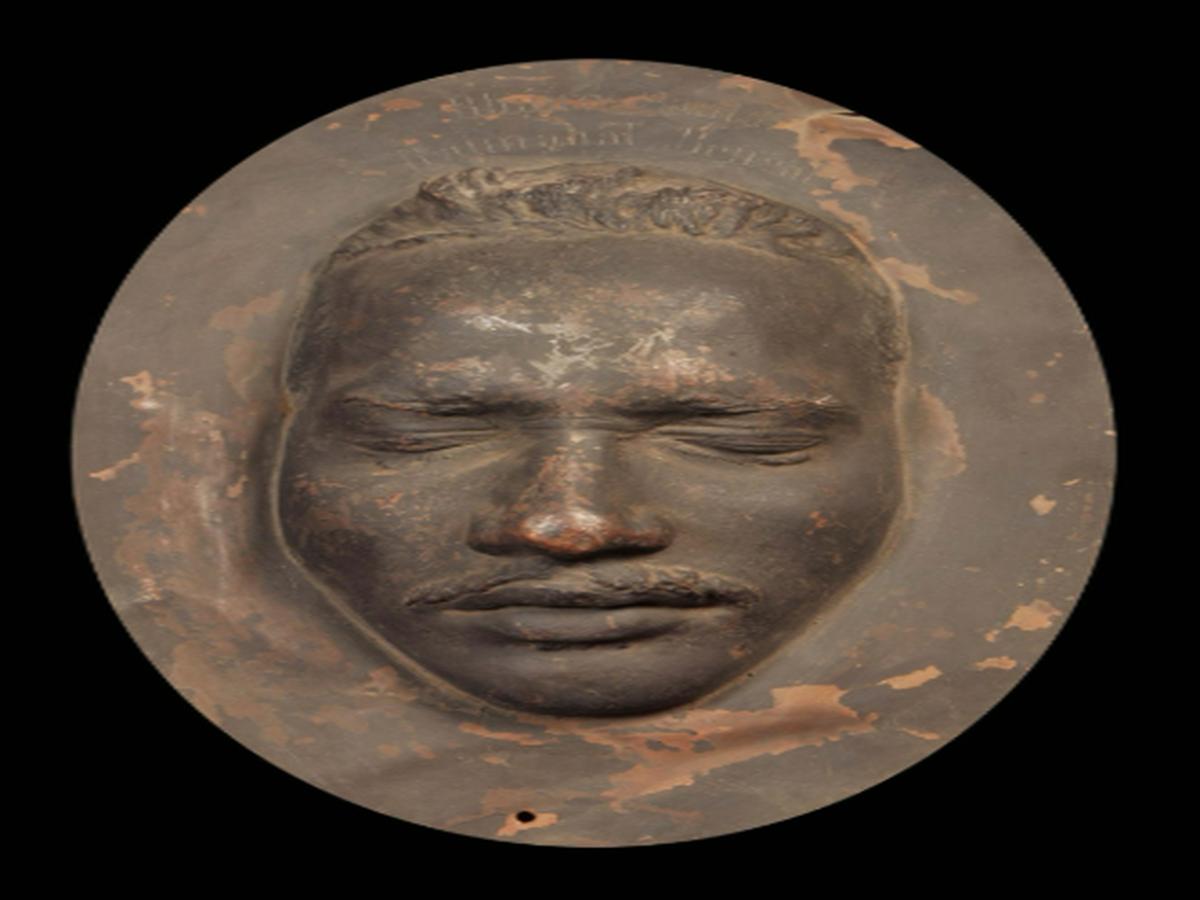State
Tribe Name
Art Type
short description
An oval-faced metal cast depicts Bhano, a man from Rajmahal, which is in present-day Jharkhand, Eastern India. The upper part of the cast bears the engraved name and locality of the individual, a common feature on these memorial artefacts. The face is made special and identifiable by a deeply carved moustache, giving it a strong personal identity and individuality featured in the cast. This piece is Santhal, one of the largest and culturally affluent tribal communities in India. A very long and resilient history of the Santhals is based in the forests, hills, and valleys of Jharkhand, West Bengal, Odisha, and Bihar.
Thumbnail

Filter Postion
Left
Filter Background
Off
Theme
Filter Header Image

content
Image

description
An oval-faced metal cast depicts Bhano, a man from Rajmahal, which is in present-day Jharkhand, Eastern India. The upper part of the cast bears the engraved name and locality of the individual, a common feature on these memorial artefacts. The face is made special and identifiable by a deeply carved moustache, giving it a strong personal identity and individuality featured in the cast. This piece is Santhal, one of the largest and culturally affluent tribal communities in India. A very long and resilient history of the Santhals is based in the forests, hills, and valleys of Jharkhand, West Bengal, Odisha, and Bihar.
Their traditions encompass rich attributes of oral tradition, music, dance, and ritual practices honoring ancestors and spirits. This face mould could have been used in the memory of the ancestors, either as a household memorial or for the community's rituals. The face cast would hold both the physical characteristics and the honour and memory of the individual, indicating the respect Santhals have for their lineage and heritage. Metal workmanship further speaks of the local artisan, who shaped these forms with limited tools but with much detail. Now held in preservation in the Indian Museum, Kolkata, this artefact provides a link between personal memories and collective cultural identities and allows an insight into Santhal visual culture and commemorative practices.
Their traditions encompass rich attributes of oral tradition, music, dance, and ritual practices honoring ancestors and spirits. This face mould could have been used in the memory of the ancestors, either as a household memorial or for the community's rituals. The face cast would hold both the physical characteristics and the honour and memory of the individual, indicating the respect Santhals have for their lineage and heritage. Metal workmanship further speaks of the local artisan, who shaped these forms with limited tools but with much detail. Now held in preservation in the Indian Museum, Kolkata, this artefact provides a link between personal memories and collective cultural identities and allows an insight into Santhal visual culture and commemorative practices.
Image Mode
landscape
promoted
On
Verified
Off
